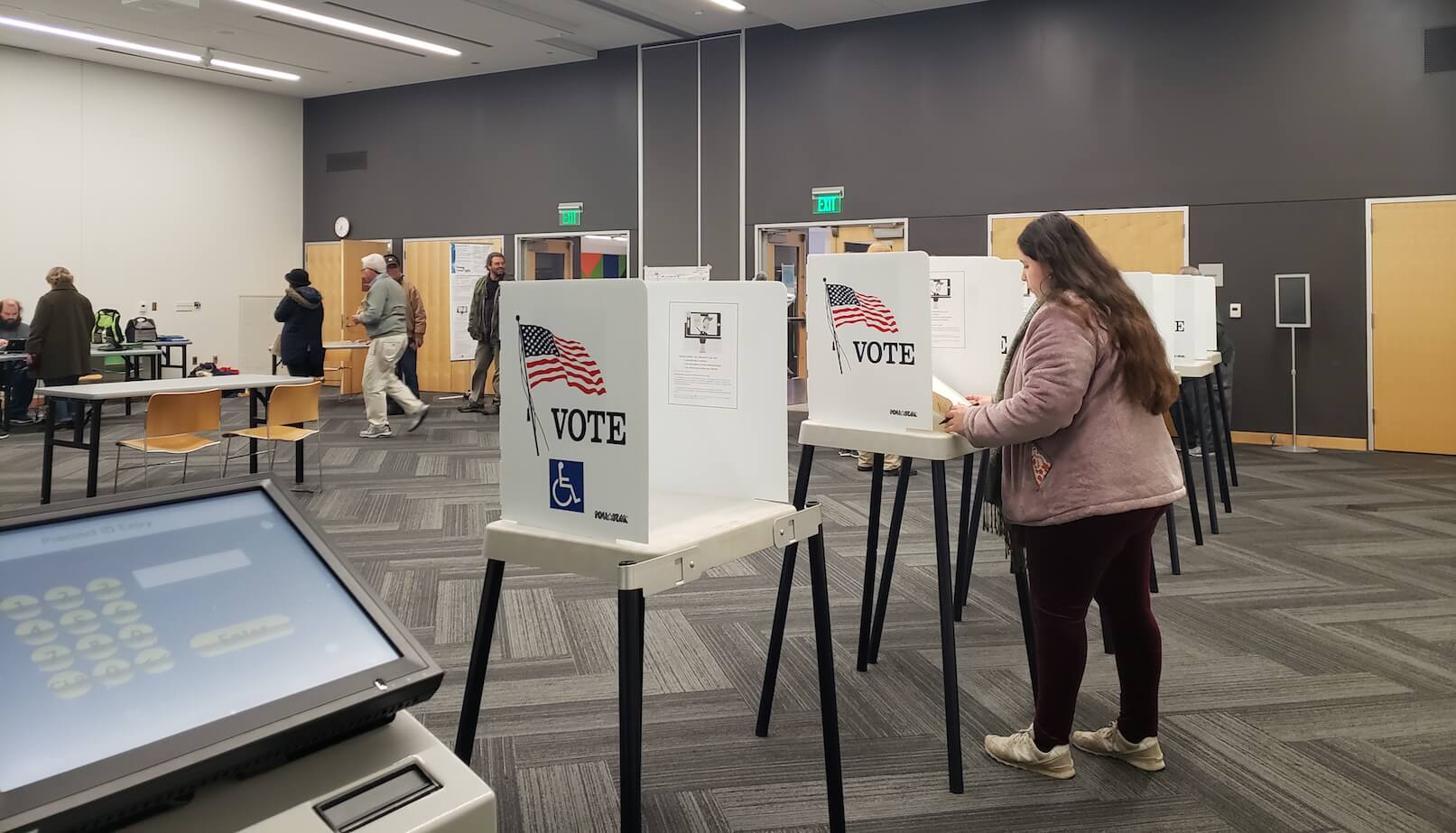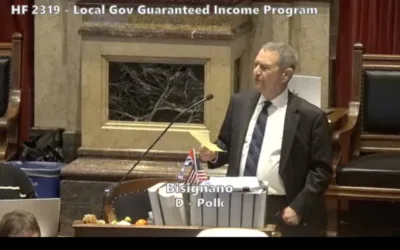
With about nine months to go before the 2020 general election, eyes are already on states’ election infrastructure and practices that affect voters.
In Iowa, some are concerned about a new voter ID law that require voters to prove who they are before they can cast a ballot. With recent news out of Wisconsin, Georgia, Ohio and Texas, questions about purging voters from the rolls have risen.
The controversy in Wisconsin is about when to remove inactive voters from the system. The purge of inactive voters was scheduled to begin in 2021, but a conservative law group in the state filed a lawsuit arguing the removals should happen as soon as possible — a judge agreed.
[inline-ad id=”5″]
Now, a circuit court judge has blocked the removals because three Democrats on the state’s elections commission refused to comply and were held in contempt.
People don’t hear many complaints from Iowa, though.
“I think Iowa does it pretty well, it’s in line with what the federal laws are,” said Pat Gill, Woodbury County auditor. “As far as trying to maintain a fairly accurate list without being too onerous for a voter to remain as a registered voter, I think it’s a good overall system.”
Gill has worked as the Woodbury County auditor for 24 years, and he said, in all that time, the system hasn’t produced any problems.
“I haven’t really heard any complaints about it from folks that feel like they’ve been disenfranchised as a result of it,” he said.
[inline-ad id=”0″]
Iowa’s system requires multiple steps and notifications, so voters are never removed from the rolls without their knowledge. Inactivity is determined by address, which is confirmed every year. That happens one of two ways.
One is through the United States Postal Service’s National Change of Address Program. Every year, the program assesses who changed their address and then cards are mailed out by the Secretary of State or the county auditors to check in with those people. Each county can choose whether to participate and, last year, all 99 did.
If the system shows a voter moved within the same county, the commissioner changes the records to update the address. The voter is also mailed a notice of that change, with prepaid postage so they can confirm or correct the address change.
[inline-ad id=”1″]
If the system shows the voter moved outside the county, they’re marked inactive and sent a notification to their new address with prepaid postage. Voters are given the opportunity to correct the change if necessary, and be reactivated, or to register in the new county.
If the county doesn’t participate in the program, the commissioner sends that card to every registered voter in the county to confirm their address.
Cancellation only occurs if commissioners have confirmed death; someone registers to vote in a different jurisdiction or cancels their registration in writing; a court sends confirmation someone’s been convicted of a felony; or if a voter’s record has been inactive for two consecutive general elections.
[inline-ad id=”2″]
But if someone votes again or otherwise contacts the auditor, the voter is re-activated. If a registration is canceled, the voter also receives notice about that change.
“It’s way easier to get reactivated than it is to get your status completely cancelled,” said Johnson County Auditor Travis Weipert.
Another policy working in voters’ favor is the ability to register at the polls on Election Day.
Before same-day registration took effect in 2007, voters had to register 10 days before general and primary elections, and 11 days before other types of elections.
[inline-ad id=”3″]
“Prior to that happening, we did have some issues,” Gill said. “People who moved and didn’t update their registration — you know, if they had moved prior to when registration deadline closed — they simply weren’t allowed to vote. So, same-day registration cleaned that up.”
Activists in some states and on a national level urge states to be more transparent about the process by which they maintain their voter rolls.
In Iowa, Weipert said, the state goes to great lengths before cancelling a voter’s registration. And the whole process is outlined in the state’s voter registration codes.
[inline-ad id=”4″]
“It’s an extensive process, a lot of different forms that are mailed out,” Gill said. “And, I think in the end, it gets pretty complicated, but it’s an effort to keep voters active.”
By Nikoel Hytrek
Posted 1/19/20
Support Our Cause
Thank you for taking the time to read our work. Before you go, we hope you'll consider supporting our values-driven journalism, which has always strived to make clear what's really at stake for Iowans and our future.
Since day one, our goal here at Iowa Starting Line has always been to empower people across the state with fact-based news and information. We believe that when people are armed with knowledge about what's happening in their local, state, and federal governments—including who is working on their behalf and who is actively trying to block efforts aimed at improving the daily lives of Iowan families—they will be inspired to become civically engaged.


Iowa Republicans make outlawing gay marriage key 2024 campaign priority
Iowa Republicans have made outlawing gay marriage a key goal in their 2024 party platform. During the Iowa GOP’s 2024 state convention on Saturday,...

Department of Justice says Iowa immigration law violates US Constitution
If Iowa doesn’t suspend the enforcement of its new immigration law by May 7, the state could face a federal lawsuit, according to the Des Moines...

Rushing: Iowa State president said the quiet part out loud
I want to thank Iowa State University President Wendy Wintersteen for doing us all a favor by finally saying the quiet part out loud: all the...

Iowa sets aside almost $180 million for year two of voucher program
Iowa has committed nearly $180 million in taxpayer funds to support private school tuition in the 2024-25 school year, which is almost $50 million...

Kalbach: Immediate action needed on corporate ag pollution
Iowa agriculture has undergone substantial changes over the past 40 years. We see it all around us. Rather than crops and livestock being raised on...

VIDEO: Jochum calls Gov. Reynolds’ summer meal program a ‘hunger game’
Iowa Gov. Reynolds announced a competitive $900,000 grant program to feed Iowa children over the summer, months after she declined $29 million in...





